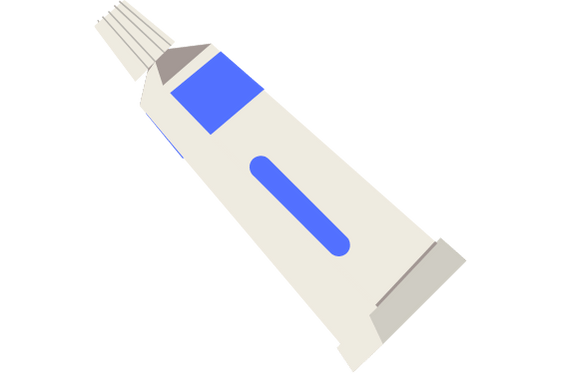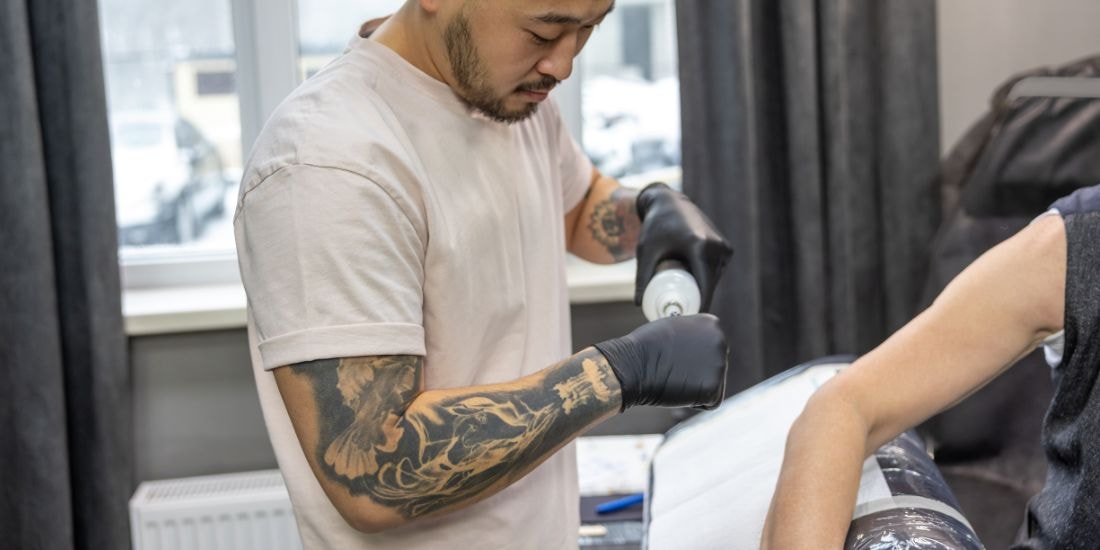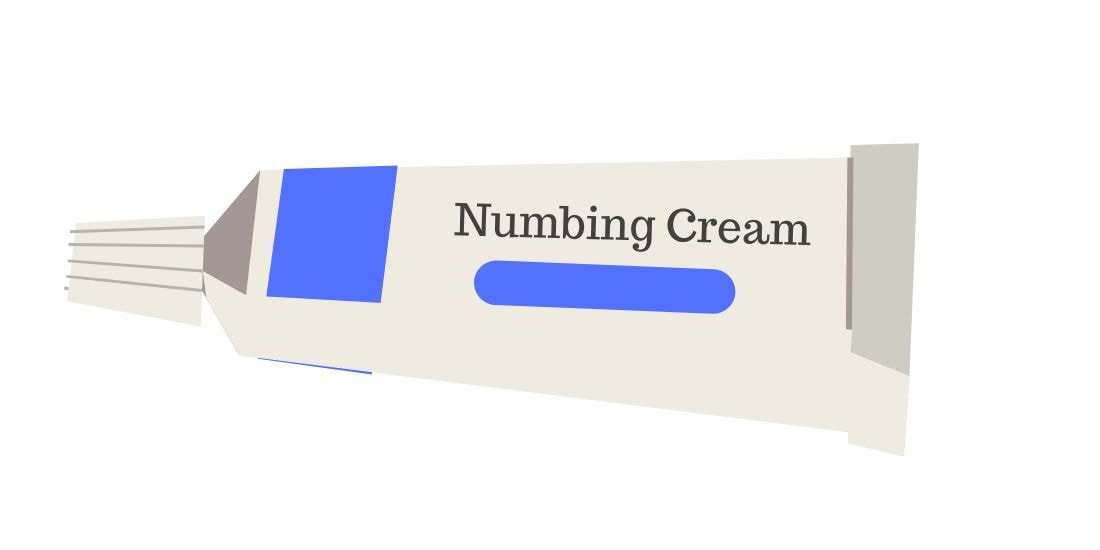
When facing discomfort on the skin, many people look for a method to achieve relief without resorting to invasive approaches. One commonly relied-upon option is a numbing cream. For various procedure types, from cosmetic treatments to medical interventions, these products can help individuals better handle localized pain. The right cream can assist in making certain steps more comfortable, whether you are prepping for tattoos, dealing with minor cuts, or seeking to reduce painful sensations from everyday scratches.
Numbing cream works by helping numb the surface of the skin, offering a barrier that reduces the sensation felt during a procedure. It’s not surprising that so many people look to purchase a cream that provides effective numbing. While there are numerous options in the market, understanding the ingredients, proper application methods, potential side effects, and reviews from other users can help you make a suitable choice. For best results, it’s often helpful to know exactly how these products function and what to expect before you apply them. Over the following sections, we will review the key facts about numbing cream, discuss how lidocaine work within these formulations, and detail guidelines for safe and effective usage. By doing so, you can feel more confident if you decide to purchase a tube of cream and integrate it into your routine for pain reduction.

Numbing cream is widely available for purchase without a prescription, and this over-the-counter accessibility makes it simpler to keep a tube on hand. Before you purchase, however, take the time to review information on various types of cream, their active ingredients, and what other people say in their reviews. Also, always remember that following the directions on the tube and seeking doctor advice if needed can provide reassurance and safety.
What Is Numbing Cream and How Does It Work?
A numbing cream is a topical cream specifically developed to reduce pain and discomfort on the skin before or during a chosen procedure. By applying this cream to the designated site, you can help numb the area and limit the pain messages that needles or other stimuli send through the tissue. Such cream often comes in a tube, making it easy to purchase and store at home. Because many people experience uncomfortable or painful sensations from even minor procedures, a numbing product can offer valuable relief.
Numbing cream generally works best if given proper time to be absorbed into the skin. This often involves putting the cream on the area well before the actual procedure to ensure adequate numb effect. Whether you are dealing with tattooing, waxing, injections, or hair removal, the underlying goal is to minimize pain and provide a sense of ease.

Key Ingredients of a Numbing Cream
Most numbing cream formulations rely on active ingredients such as lidocaine, benzyl alcohol, tocopheryl acetate (a form of vitamin e), and sometimes propylene glycol. Of these, lidocaine is among the most frequently used due to its proven effectiveness. Such ingredients help numb the skin by blocking pain signals in local tissue. Since lidocaine work by interfering with nerve conduction, it can temporarily halt the sensation of pain. Other additives, like benzyl alcohol, can support overall stability and penetration, while tocopheryl acetate can nourish the skin. Some formulations also include propylene glycol to enhance absorption.
The presence of vitamin e in certain cream products helps maintain skin health and can support recovery of the treated area. Always review the ingredient list and consider how your skin might react. Children, for instance, may have more sensitive skin, requiring additional caution. If unsure, ask your doctor for advice or hear their answer to whether you should apply a particular numbing cream.
Mechanism of Action of Numbing Creams
When you spread numbing cream on the skin, the active components, such as lidocaine, penetrate the outer layers. This process temporarily hinders the nerves’ ability to transmit signals. Essentially, the nerves in the treated area numb, causing a reduction in pain perception. By doing so, when needles are involved or a procedure that applies pressure to the skin occurs, the individual experiences less discomfort. Because the nerves are numb, the typical pain response is diminished.
Many reviews highlight how effective numbing products can be when used correctly. To achieve optimal numb results, users often purchase a cream with a suitable concentration of lidocaine or a combination of agents. Thoroughly review the product’s usage instructions and consider speaking with a doctor before using it on large areas of the body.

Popular Types of Numbing Creams
The market has various cream options that serve different purposes. Choosing the right numbing cream often depends on your individual procedure and personal preference. Some products are better for certain skin conditions, while others are formulated to work well with tattooing only. Online reviews, as well as direct review of the product’s label, can be a helpful step. Many retailers sell well-known brands at a reasonable price, and by comparing options, you can purchase the one that aligns with your needs.
Lidocaine-Based Products
Lidocaine is among the most common active ingredients found in a numbing cream. Concentrations can vary, but lidocaine levels of around 4-5% are typical for consumer products. Because lidocaine is a well-studied anesthetic, it’s often considered reliable and effective. This is why so many users searching for a way to numb their skin before a procedure opt for lidocaine-based cream. Such cream is widely available for purchase without a prescription and can be found in a tube format for easy storage. Many reviews praise the effectiveness of lidocaine in ensuring a better experience during tattooing, waxing, or injections.
If you’re considering a lidocaine product, first review the label carefully. Check for any added ingredients, such as tocopheryl acetate or vitamin supplements, which can support the skin. Ensure that you follow the directions on the tube exactly and take into account the advice of a doctor if you have underlying conditions.
Benzocaine and Tetracaine Options
While lidocaine is often the go-to option, many numbing cream varieties rely on other active agents like benzocaine and tetracaine. Benzocaine-based cream can numb the skin effectively, though it may differ slightly in how long it takes to achieve the full numb effect. Tetracaine-based cream is another choice that some people purchase, often for specialized scenarios. These options are readily found online, where you can read reviews from other users who have tried them.
Just like with lidocaine, it’s crucial to review the product details before buying. Some individuals may have sensitivities to benzocaine or tetracaine, so be sure to listen to your doctor if they have any warning or advice. Different formulations might have a distinct consistency, smell, or recommended quantity per application.
Common Uses and Applications of Numbing Creams
Numbing cream finds a place in a range of everyday and professional settings. Whether you’re a parent caring for children, an adult preparing for a cosmetic procedure, or someone who wants to reduce pain associated with scratches or minor irritations, you can often purchase a cream that fits your needs. Online reviews can provide insight into how a particular cream performs in real-life applications and whether it’s suitable for certain body parts, including the mouth or nose areas (with caution).
Minor Skin Irritations and Burns
For minor cuts, mild burns, or itching, applying a numbing cream can provide some degree of relief. While it won’t treat the underlying cause fully, it can numb the skin long enough to alleviate discomfort. This can be particularly helpful when dealing with scratches from daily household chores. Before using a cream on irritated skin, always wash and wipe the area gently. If you notice any unusual symptoms, such as severe stinging or redness, stop using the cream and review the situation with a doctor.
Keep in mind that applying numbing products is not recommended on open wounds, as this can lead to complications. Always hear medical advice and follow the directions on the tube to ensure safety.

Hair Removal, Tattoos, and Cosmetic Procedures
Numbing cream is frequently used before waxing, tattoos, and certain cosmetic treatments. By applying the cream in advance, you can numb the skin and reduce the pain associated with tattooing needles. Many professional tattoo artists review various numbing products to find one that works best for their clients. The same logic applies to waxing or laser hair removal, where a quality cream can help make the experience less uncomfortable.
When you purchase a numbing cream for tattoos, pay attention to the recommended application time. Typically, putting the cream on about an hour before the procedure helps achieve effective numb results. Check for reviews focusing on tattooing experiences, as these often provide valuable insights into how well a particular cream works under that scenario.

Use to Ease Needling for Babies
In some cases, parents look for ways to reduce discomfort for children during medical procedure steps that involve needles, such as immunizations or simple blood draws. Applying numbing cream to the skin ahead of time can help numb the area, making the procedure feel less stressful. Parents often review different products before selecting a tube suitable for children. Ensure that the cream is approved for use in younger populations and always consult a doctor. Since children can be more sensitive to certain ingredients, close review of product instructions and cautious usage is essential. Some families in the USA rely on these products to make routine healthcare visits less challenging. Do not apply to large areas of a child’s body without asking a doctor.
Key Benefits and Advantages of Using Numbing Cream
Selecting the right numbing cream can be a helpful strategy for minimizing pain and ensuring a smoother procedure. Many reviews highlight how these products can work wonders, especially when compared to facing a procedure unassisted.
Fast-Acting and Long-Lasting Relief
One of the prime reasons people purchase a numbing cream is the relief it provides. Within a set number of hours, the cream can effectively numb the treated area, helping users feel more at ease. This is particularly helpful if you’re nervous about needles or sensitive skin. By relying on a well-formulated cream, you can enjoy relief that might last up to a couple of hours, depending on the product. While individual experiences vary, users often review that lidocaine-based cream can maintain numb sensations for the necessary duration of a procedure.
Over-the-Counter Accessibility
Another key advantage is that many numbing cream options are available for purchase without a prescription. This accessibility means that users can purchase a tube at local pharmacies, online retailers, or even specialized vendors in the USA. Reading multiple reviews before you purchase is wise. Non-prescription status also allows individuals to treat themselves to a more comfortable experience without waiting for a doctor’s appointment. Just be sure to consider any known allergies, examine the ingredient list, and avoid using it on large areas if you have never tried it before.

How to Apply Numbing Cream Safely
Another key advantage is that many numbing cream options are available for purchase without a prescription. This accessibility means that users can purchase a tube at local pharmacies, online retailers, or even specialized vendors in the USA. Reading multiple reviews before you purchase is wise. Non-prescription status also allows individuals to treat themselves to a more comfortable experience without waiting for a doctor’s appointment. Just be sure to consider any known allergies, examine the ingredient list, and avoid using it on large areas if you have never tried it before.
Proper Application Steps for Using a Numbing Cream
- Wash the area thoroughly: Use mild soap and warm water, then rinse and wipe dry. This removes dirt, reducing the risk of irritation.
- Put the cream on in a thin layer: Applying the cream evenly over the skin surface you want to numb is essential. Do not apply more than the recommended quantity.
- Allow sufficient waiting time: Depending on the brand, you may need to wait anywhere from 20 to 60 minutes before the procedure. This waiting ensures the cream has had time to numb the area effectively.
- Check for any unusual symptoms: If you notice redness, excessive itching, or stinging, you may need to discontinue use and review the situation with a doctor.
Enhanced Absorption with Plastic Wrap
Some users find that covering the treated area with saran wrap after applying the cream enhances absorption. By putting a thin layer of cream on the skin and then placing saran wrap over it, you create a sort of seal that can help the cream penetrate more effectively. This method is frequently mentioned in reviews, with some users stating they get a more pronounced numb effect. Always follow product recommendations and avoid leaving the wrap on for too many hours. After the recommended time, remove the wrap, and wipe away any excess cream before proceeding with the procedure.
Safety Considerations and Potential Side Effects
Like any product applied to the skin, a numbing cream can cause unwanted reactions in some individuals. While most people tolerate these cream products well, it’s wise to review potential side effects and consult a doctor if you have any concerns.

Allergic Reactions and Skin Sensitivities
Some people may develop allergic responses to ingredients like lidocaine, benzyl alcohol, or other additives. Watch for redness, swelling, or severe itching after applying the cream. Mild irritation can sometimes occur, but if the condition worsens, wash off the cream thoroughly and review the incident with a doctor. Be cautious when considering application near the mouth or nose, as these are sensitive skin areas, and the membranes there can absorb substances differently. Also, keep in mind that children can be more susceptible to reactions. Listen to your body and stop using the cream if you become uncomfortable.
Guidelines for Chronic Pain Management
While a numbing cream can help treat localized discomfort associated with a single procedure, relying on it long-term for chronic pain issues is something that should be done under the guidance of a doctor. Chronic conditions require careful review of all treatment options, and consistent usage of a cream may not be appropriate without medical input. In some cases, doctors might suggest using these products intermittently, rather than daily, to avoid over-application or unintended effects on the skin. If you plan to purchase a specific cream for chronic pain, consider seeking professional advice to ensure safety and effectiveness.
By understanding how lidocaine and other ingredients can help numb the skin, and by taking the time to review product options before you purchase, you can find a reliable cream that suits your needs. Remember to adhere to safety measures, store your tube in a cool, dry store location, and keep these products out of reach of children.
For those seeking relief and a more normal experience in what can otherwise be pain-inducing situations, a quality numbing cream can make a positive difference. Just make sure you take the time to properly treat the site, follow all directions, and keep your doctor informed if you have any ongoing concerns.
FAQ
Can I Use Numbing Cream on Broken Skin?
No. Avoid applying numbing cream on open wounds or damaged skin. Doing so could lead to increased absorption into the tissue, which may cause undesirable side effects. If you have scratches that haven’t healed or other forms of broken skin, review alternative methods for achieving relief, or consult a doctor before using any cream.
How Long Does the Numbing Effect Last?
The duration can vary, but many people report feeling numb for up to a few hours. Some cream products are formulated to deliver a strong numb sensation for the entire procedure, while others might wear off sooner. Review the product’s label, read reviews, and follow the directions closely. For best results, apply the cream at the recommended time before the procedure begins.
Is a Prescription Required?
For many numbing cream varieties, no prescription is required, and you can simply purchase a suitable tube from local pharmacies or online stores in the USA. Some stronger formulations may require a prescription, so review the product details or ask your doctor. Checking reviews can help you understand whether a particular brand or concentration is considered over-the-counter or not.
Are These Creams Safe for Children?
When using numbing cream on children, exercise caution. Children may be more sensitive to active ingredients, and the skin of children can react differently. Always review product instructions, consider the age and size of the child, and, if in doubt, consult a doctor. Some parents opt to use numbing products when children receive injections. Because children can become anxious with needles, applying a cream beforehand might help them stay calm. Still, it’s important to carefully monitor children and stick to recommended guidelines. Avoid applying on large areas of children’s skin. Reading reviews from other parents can provide insight, but a doctor’s answer is the most reliable source of guidance.
How Often Can I Apply It?
The frequency of application depends on the specific cream. Some products recommend only a single use before a procedure, while others allow multiple applications throughout the day. Always review the manufacturer’s guidelines for usage frequency. Overusing the cream may increase the risk of side effects and may lead to diminished benefits over time. If you have persistent pain, repetitive procedure schedules, or ongoing symptoms, discuss the situation with a doctor for the safest approach.
